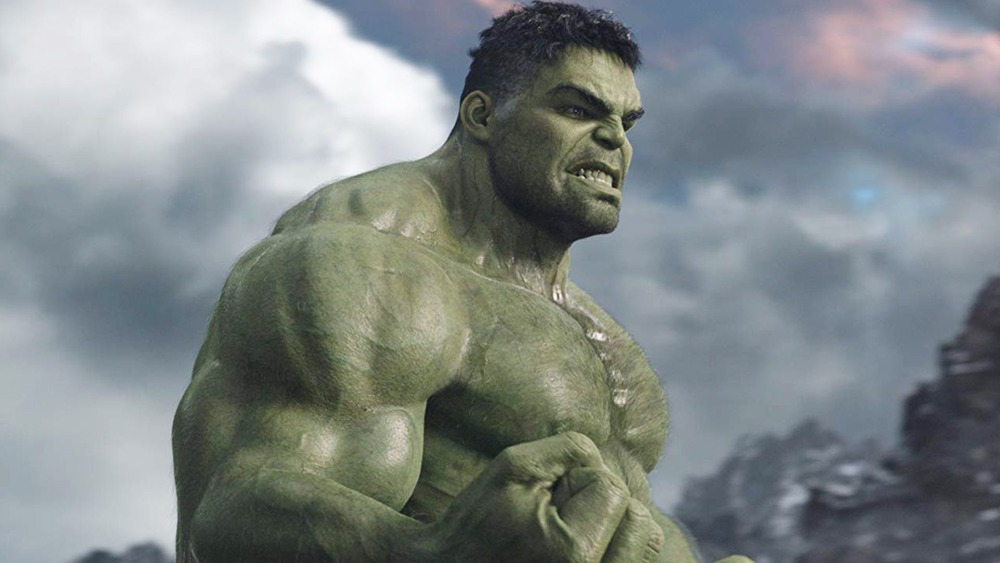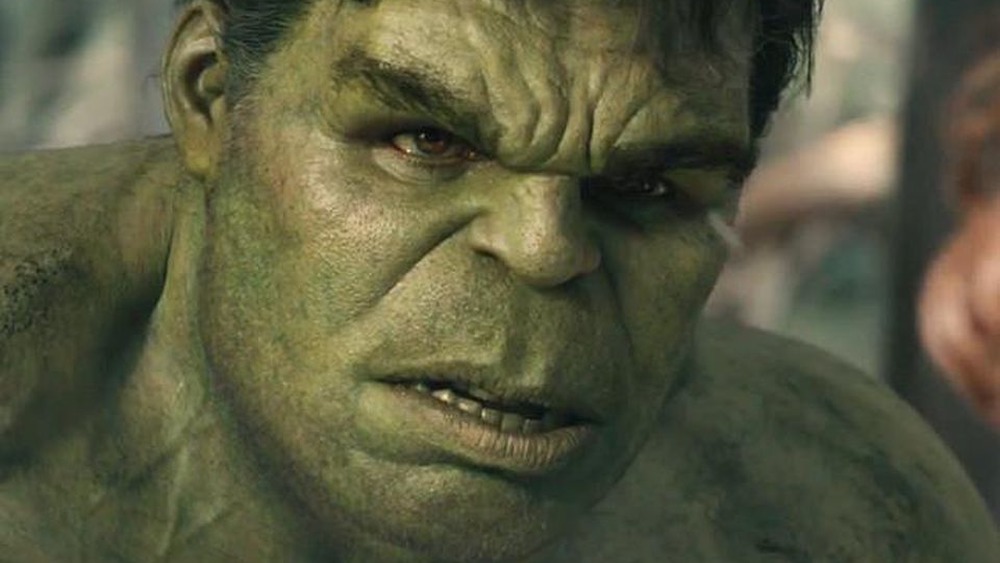What The Avengers S.T.A.T.I.O.N. Exhibit Confirms About The Hulk
Marvel fans are well aware that the angrier Hulk (Mark Ruffalo) gets, the stronger he gets, yet Bruce Banner's gamma-irradiated other self is still shrouded in a degree of mystery. His rage-fueled strength is demonstrated time and again throughout the Marvel Cinematic Universe, but the exact nature of that strength is left largely unexplored. How, for instance, is Hulk able to perform the insanely long jumps he does with such accuracy and precision? Smart Hulk from Avengers: Endgame aside, you'd think his toddler-level intelligence wouldn't allow for such feats. Thankfully, Marvel's S.T.A.T.I.O.N. exhibit is finally providing some answers (via The Direct).
Scientific Training and Tactical Intelligence Operative Network, S.T.A.T.I.O.N. (an acronym conceived as an homage to S.H.I.E.L.D.), is every MCU fan's dream come true, filled with film props and reconstructions set alongside detailed information about the characters and lore. As Hulk is one of Marvel's biggest heroes, he has a section of his own, which provides some much-needed insight into the finer details of his powers. More specifically, it maps the neurological changes Banner undergoes as a result of the transformation.
No brain, no gain
According to one of the interactive touch screens, "Bruce Banner's transformation into Hulk led to an increase of approximately 50% of the cerebellum size ... [which] was fundamental in enabling Hulk to keep the balance, spatial coordination and precision needed for his 'long jumps.'" So it's not something Hulk does consciously — more of an animal instinct of some kind, similar to cats' unmatched sense of balance (which, despite popular belief, has nothing to do with their whiskers). That doesn't make it any less impressive, but it does explain some things.
What accounts for Hulk being able to keep track while he's moving so quickly through the air, though? He doesn't often display super speed in the traditional sense, but there's little doubt that his jumps send him careening at considerable speeds. As the exhibit tells it, Hulk's visual cortex is 15% larger than Banner's, which "allows Hulk to have a fast and increased visual processing while moving rapidly during his long jumps." Combined with his pinpoint accuracy while leaping, then, Hulk also experiences an increase in visual awareness that keeps him keyed in to targets and threats.
The exhibit talks a bit about Hulk's behavioral changes as well (pre-Endgame). When he transforms, Banner's prefrontal cortex — the part of the brain responsible for expression and decision making — decreases by 30%, while his amygdala — the part of the brain connected to how we experience emotions — increases by 20%. Together, these changes stir up the recipe for disaster that Hulk often is, driven by the near-constant anger that overrides his thoughts. Not to say Hulk shouldn't be blamed for his actions, like when he hits Black Widow (Scarlett Johansson) in The Avengers or goes on a rampage tempered by Iron Man (Robert Downey Jr.) in Avengers: Age of Ultron, but he's definitely influenced by things he has no control over.
With Ruffalo returning as Hulk in the upcoming She-Hulk series on Disney+, fans will likely receive even further insight into the jolly green giant soon enough.

